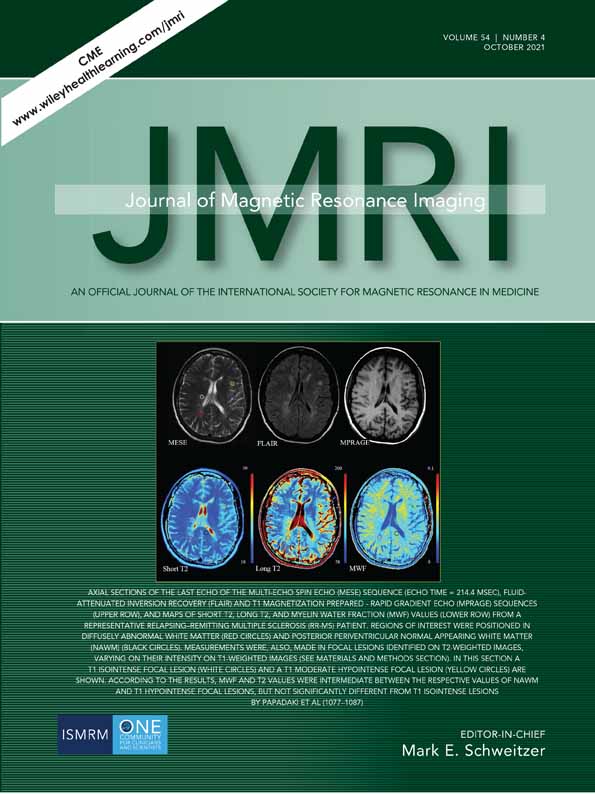Altered Functional Connectivity of Hippocampal Subfields in Poststroke Dementia
Abstract
Background
The hippocampus (HP) plays a critical role in memory and orientational functions and is functionally heterogeneous along the longitudinal anterior–posterior axis. Although the previous study has reported volumetric atrophy in hippocampal subfields of patients with poststroke dementia (PSD), how the functional connectivity (FC) is altered in these subfields remains unclear.
Purpose
To examine the FC changes of the HP subfields in patients with PSD.
Study Type
Prospective.
Population
Seventeen normal controls, 20 PSD, and 24 nondemented poststroke (PSND) patients.
Field Strength/Sequence
A 3.0 T/ T1-weighted imaging, resting-state functional and diffusion tensor imaging.
Assessment
We first segmented the HP using independent component analysis, and then used granger causality analysis to calculate the directed FCs (dFCs) between the subfields and the whole brain, and compared the dFCs among PSD, PSND, and controls.
Statistical Tests
Student's t-test, chi-square test, one-way ANCOVA, multiple regression, support vector machine, multiple comparison correction, and reproducibility analysis. A P value < 0.05 was considered statistically significant.
Results
Our results showed HP was functionally divided into HPhead, HPbody, and HPtail bilaterally along the longitudinal axis. PSD patients showed significant dementia-specific decreases in the inward information flow and increases in the outward information flow associated with the bilateral entire HP/HPhead and left HPbody (P < 0.05). Moreover, we observed significant correlations (P < 0.05) between the cognition score and the dFCs related to the bilateral entire HP and left HPhead in the PSD group. Furthermore, dFCs of the HP and its subfields improved the classification between the PSD and PSND patients (accuracy/sensitivity/specificity: 94%/95%/93%) compared to the clinical and demographic parameters alone.
Data Conclusion
These findings suggest that altered transmission and reception of information in the HP. These alternations were specific to individual subfields in PSD patients and may offer insight into the neurophysiological mechanisms underlying PSD.
Evidence Level
1
Technical Efficacy
Stage 2
Conflict of interest
The authors declare no potential conflicts of interest.




